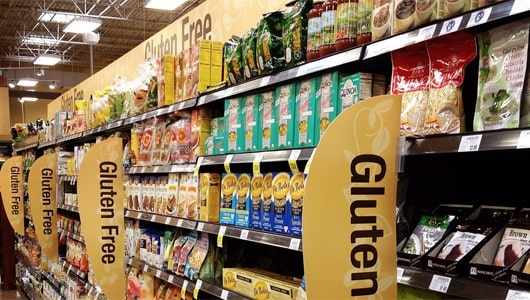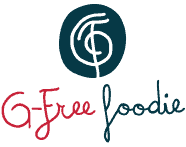Updated December 2021 to correct links
Gluten is simply the protein part of wheat, rye, barley, and other related grains. Some people cannot tolerate gluten when it comes in contact with the small intestine. This condition is known as celiac disease. There is also evidence that a skin disorder called dermatitis herpetiformis is associated with gluten intolerance. There are also several forms of non-Celiac gluten intolerance.
In patients with celiac disease, gluten injures the lining of the small intestine. This injury results in weight loss, bloating, diarrhea, gas, abdominal cramps, or vitamin and mineral deficiencies. When patients totally eliminate gluten from the diet, the lining of the intestine has a chance to heal.
In patients with gluten intolerance or gluten allergy, the symptoms are varied and also respond well to the reduction, severe limiting or removal of gluten from the diet.
Removing gluten from the diet is not easy. Grains are used in the preparation of many foods. It is often hard to tell by an ingredient’s name what may be in it, so it is easy to eat gluten without even knowing it. However, staying on a strict gluten-free diet can dramatically improve the patient’s condition. Since it is necessary to remain on the gluten-free diet throughout life, it will be helpful to review the diet with a registered dietitian.
What about Oats?
Oats deserve special attention and mention. Oats are believed to be safe for patients with celiac disease, although this was not always the case. The problem with oat products lies not in the grain but in the manufacturing process. When oats are processed in the same facilities as wheat, CROSS-contamination can occur even with the best cleaning protocol. Oat products can now be found that are not cross contaminated. These may be tried after an initial period of six months to see if they can be tolerated. Most, but not all, patients are able to tolerate pure oat products.
A Gluten-Free Life Diet and Lifestyle!
Eating a gluten-free diet can be a gradual process of learning, though some people simply have sufficient nutritional or cooking experience and have acquired enough knowledge to make a rapid transition. If you are diagnosed as celiac or gluten intolerant, it will most likely be recommended for your overall health and well-being that you make a change in diet as quickly as possible. The transition may be a bit of a learning process, yet once it is acquired, there will be a welcome improvement in health.
Here's what happens when we asked the public what gluten is:
Gluten-Free References and Resources
There are many good people, companies, and Internet resources to help keep us well informed. Here are a few of my favorites that are concerned with celiac disease, gluten intolerance and gluten sensitivity.
Celiac Disease Center at Columbia University
http://CeliacDiseaseCenter.columbia.edu
American Celiac Society
P.O. Box 23455
New Orleans, LA 70183-0455
(504) 737-3293
National Celiac Assoc./USA, Inc.
http://www.csaceliacs.org
Celiac Disease Foundation
http://Celiac.org
Gluten Intolerance Group of North America
31214 124th Ave SE
Auburn, WA 98092-3667
(253) 833-6655
www.gluten.net
Celiac.com
4927 Sonoma Hwy., Ste C1
Santa Rosa, CA 95409
(707) 509-4528
Fax: 707-324-6060
R.O.C.K (Raising Our Celiac Kids)
http://www.celiackids.com
Kids with Food Allergies, Inc.
http://www.KidsWithFoodAllergies.org
American Celiac Disease Alliance
http://www.americanceliac.org
Beyond Celiac/National Foundation for Celiac Awareness (NFCA)
http://www.celiaccentral.org
Article Courtesy: G-Free Expert Tina Turbin
You may find these two G-Free Foodies Guides useful: Ingredient Names for Gluten & Ingredients that MAY Contain Gluten









Let Us Know What You Think